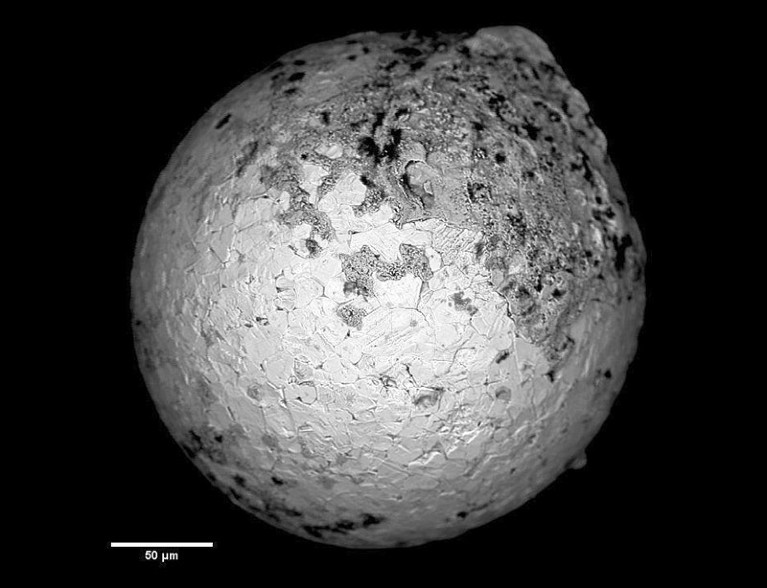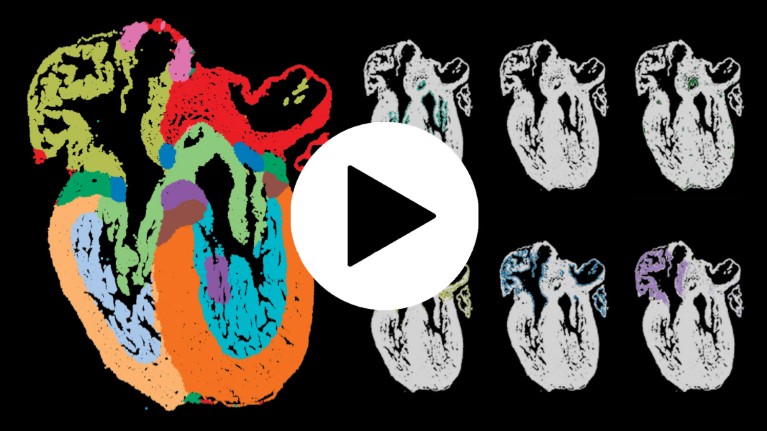[ad_1]
Hello Nature readers, would you like to get this Briefing in your inbox free every day? Sign up here.

Avi Loeb and his team say that metallic balls found near Papua New Guinea could be of extraterrestrial origin.Credit: Avi Loeb’s photo collection
Scientists have clashed over whether a research team has indeed found fragments of an interstellar space rock that hit Earth in 2014. A team led by controversial astrophysicist Avi Loeb used magnetic sledges to recover more than 800 metallic spherules from the seafloor near Papua New Guinea last year. They claim that a handful of the tiny blobs are unusually rich in beryllium, lanthanum and uranium, proving that they came from outside the Solar System. But the planetary science community is unconvinced, suggesting alternate origins for the spherules, and disputing whether the 2014 asteroid impact was even interstellar.
Reference: arXiv preprint (not peer reviewed) and arXiv preprint (not peer reviewed)
A preprint study has found that some artificial intelligence (AI) systems, including those that power chatbots such as ChatGPT, are more likely to suggest that a fictional defendant is sentenced to death when they write in African American English (AAE) — a dialect spoken by millions of people in the United States that is associated with the descendants of enslaved African Americans — compared with one written in Standardized American English (SAE). The models also associated AAE speakers with extreme negative stereotypes and were more likely to match them with less-prestigious jobs. Overt racism in AI models (linking a particular group with violence, for example) can be reduced by using human feedback. But such fine-tuning did nothing to remove covert racism based purely on dialect.
Reference: arXiv preprint (not peer reviewed)
Mobile clinics in rural villages in Sierra Leone sharply boosted the uptake of COVID-19 vaccines compared to villages that did not get the service. When COVID-19 vaccines were first made available, people who live in rural areas had to make, on average, a seven-hour round trip to receive one, at a total cost that could exceed a week’s wages, says economist and study co-author Ahmed Mushfiq Mobarak. “When you’re starting with a baseline vaccination rate of essentially zero, our research shows that the most cost-effective thing to do is just to show up,” Mobarak says. The mobile clinics cost about US$33 per person vaccinated.
Read an expert analysis by public-health researchers Alison Buttenheim and Harsha Thirumurthy in the Nature News & Views article (Nature | 8 min read)
The heart is the first organ to develop, but scientists know surprisingly little about how different types of heart cells organize to form a working heart. Researchers combined RNA sequencing and high-resolution fluorescence imaging to map communities of heart cells in enough detail to build a high resolution, 3D ‘heart atlas’. As well as mapping cardiac structures, the study reveals signalling pathways that orchestrate the arrangement of heart cells. The authors hope that this ‘atlas’ will offer new insights into congenital heart disease, a leading cause of death in infants.

Features & opinion
Early-onset cancer is on the rise. Colorectal cancer, for example, has become the leading cause of cancer death among men under 50 in the United States and the second leading cause of cancer death in young women. Researchers are looking at tumour genetics, dietary changes and microbiome composition for clues, but so far there is no clear explanation for the shift. “If it had been a single smoking gun, our studies would have at least pointed to one factor,” says gastroenterologist Sonia Kupfer. “It seems to be a combination of many different factors.”
Nanomedicine researcher Morteza Mahmoudi co-founded the Academic Parity Movement after he was forced to quit his job because of bullying. The non-profit organization targets academic harassment with tailored and context-specific training, monitoring and intervention strategies. “Survey data revealed that academic bullying and harassment do not affect all scientific fields equally,” explains Mahmoudi.
Physicist Stephen Hawking died six years ago, on 14 March 2018. Fifty years ago, he published a Nature paper with the enigmatic title: Black hole explosions? The paper introduced the concept of ‘Hawking radiation’: the idea that black holes are not truly black because they constantly emit a tiny amount of heat. As Hawking soon realized, this creates a paradox. Hawking radiation doesn’t maintain the details of the original material that went into the hole; therefore, it inexorably erases information from the Universe, contradicting the laws of quantum mechanics. Efforts to solve the conundrum have led to legendary wagers, a theory that wormholes connect the inside of black holes with the outside and the idea that the Universe is a hologram. “Here it is, 50 years after that great paper, and we’re still puzzled,” says theoretical physicist John Preskill.
[ad_2]
Source Article Link

